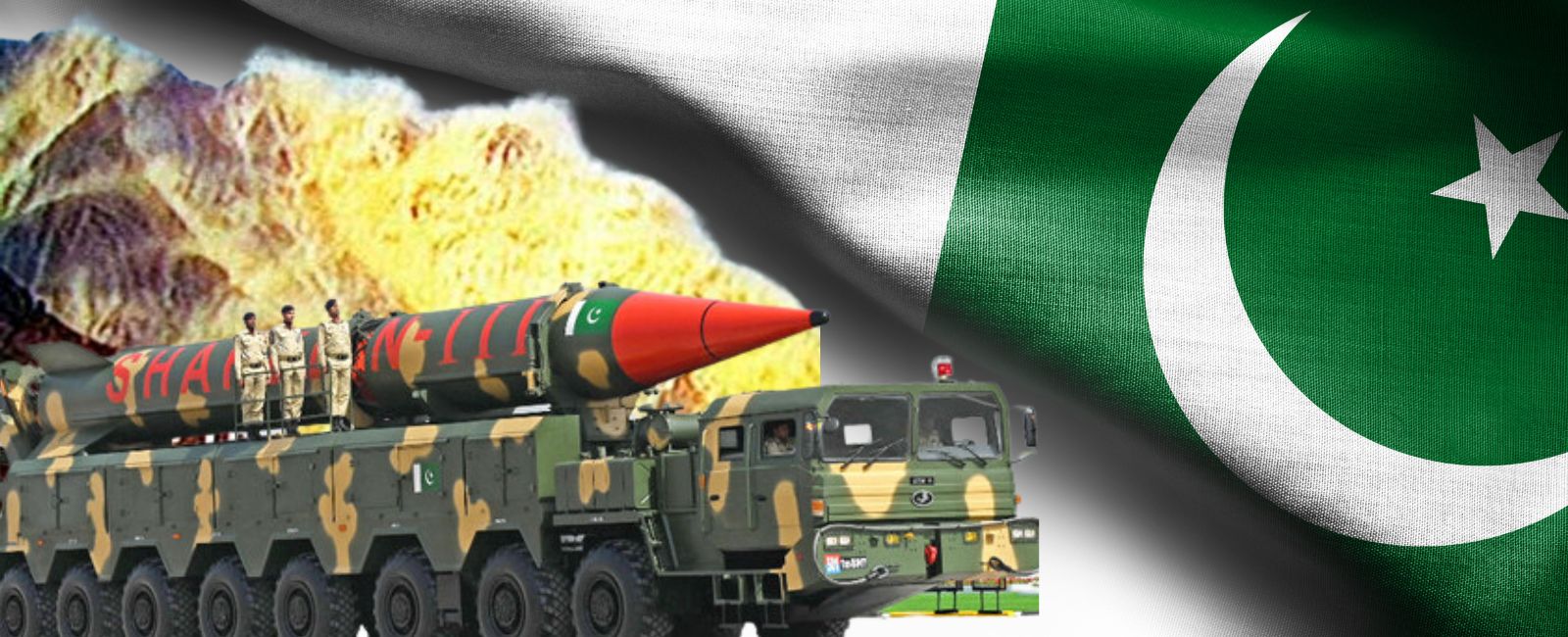Beyond Chagai: Pakistan's deterrence doctrine in the age of disruption

May 28 marks the 27th anniversary of Pakistan’s nuclear tests at Chagai. Pakistan’s nuclearisation was a direct response to India’s nuclear tests of May 11 & 13, 1998 and a declaration that strategic imbalance in South Asia would not go unchallenged. The 1998 decision embedded deterrence at the heart of Pakistan’s national security doctrine, and over the past 27 years, that deterrence has neither been ornamental nor passive. Pakistan’s deterrence has evolved in response to shifting threats, emerging technologies, and doctrines across the region.
Pakistan’s deterrence strategy from the outset has focused on ensuring that war, especially with India, remains a prohibitively costly option. The doctrine of credible minimum deterrence provided that bedrock. As India's posture evolved, particularly with its Cold Start strategy and growing conventional military capabilities, Pakistan adapted by introducing full-spectrum deterrence to cover a range of threats across conventional and sub-conventional spectrums.
Just when the region was stabilising and recovering from the 2019 Pulwama-Balakot crisis between India and Pakistan, the post-Pahalgam May 2025 crisis arrived and the utility of nuclear deterrence has once again been tested but this time in a dramatically more complex strategic environment. India launched Operation Sindoor with missile and drone strikes deep inside Pakistani territory, under the pretext of counterterrorism, triggering a calibrated but firm Pakistani response under Operation Bunyan-um-Marsoos. This was not simply a military episode. It was a reaffirmation of deterrence in the face of creeping escalation.
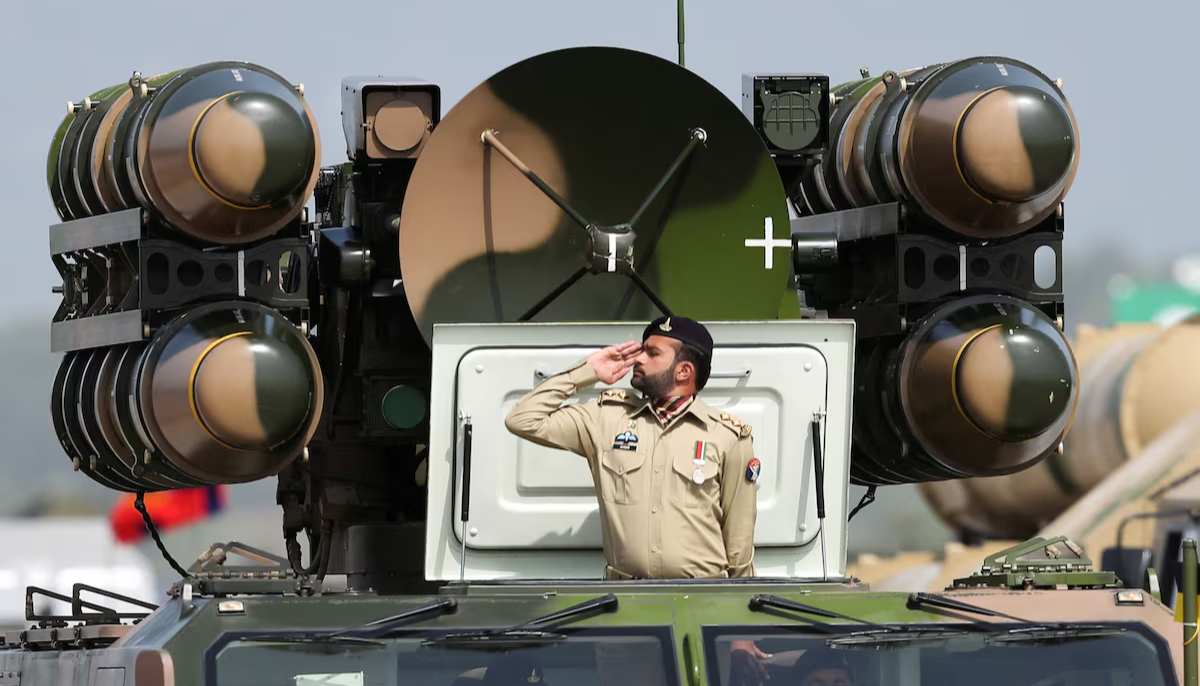
The crisis was eventually defused through a US-facilitated ceasefire, reflecting growing international concern over escalation between two nuclear-armed states.
What differentiates the 2025 crisis from previous ones is not just its intensity or duration, but its doctrinal significance. India’s shift away from its No First Use (NFU) posture, long a stabilising albeit rhetorical feature of its doctrine, is now clearer than ever. The evolution towards a doctrine of deterrence by punishment, under the nuclear umbrella, is visible in both rhetoric and action. India is no longer posturing for restraint. It is preparing for retaliation and escalation, even under nuclear conditions. This shift dramatically alters the strategic calculus for South Asia.
By choosing to launch missile strikes across Pakistan’s international boundary, India attempted to create space for what it considers justified military action without crossing the threshold of war. But Pakistan’s measured and immediate military response made one thing clear: there is no space for limited war between two nuclear-armed states with such deep-rooted historical grievances, territorial disputes, and asymmetric power dynamics.
The myth of limited war, whether under Cold Start or its revised iterations, has been thoroughly discredited. Escalation in South Asia does not follow a predictable path. The 2025 crisis, much like the 2019 Pulwama-Balakot crisis, demonstrated that once military action begins, controlling the narrative, perceptions, and pace of escalation becomes nearly impossible for either side. Strategic ambiguity under the shadow of nuclear weapons is always a trigger.
India’s strategic doctrine is no longer shaped solely by its dual-threat perceptions (Pakistan and China) or military logic. It is now visibly influenced by the ideological framework of Hindutva, a worldview that frames India’s national security not just in territorial or strategic terms, but in civilisational ones. This ideological underpinning introduces a dangerous irrationality into what ought to be a realm governed by cold calculation. Imagine a nuclear doctrine shaped by religious nationalism and majoritarian impulses, it is not just destabilising, it is existentially threatening for the South Asia region and the world at large.
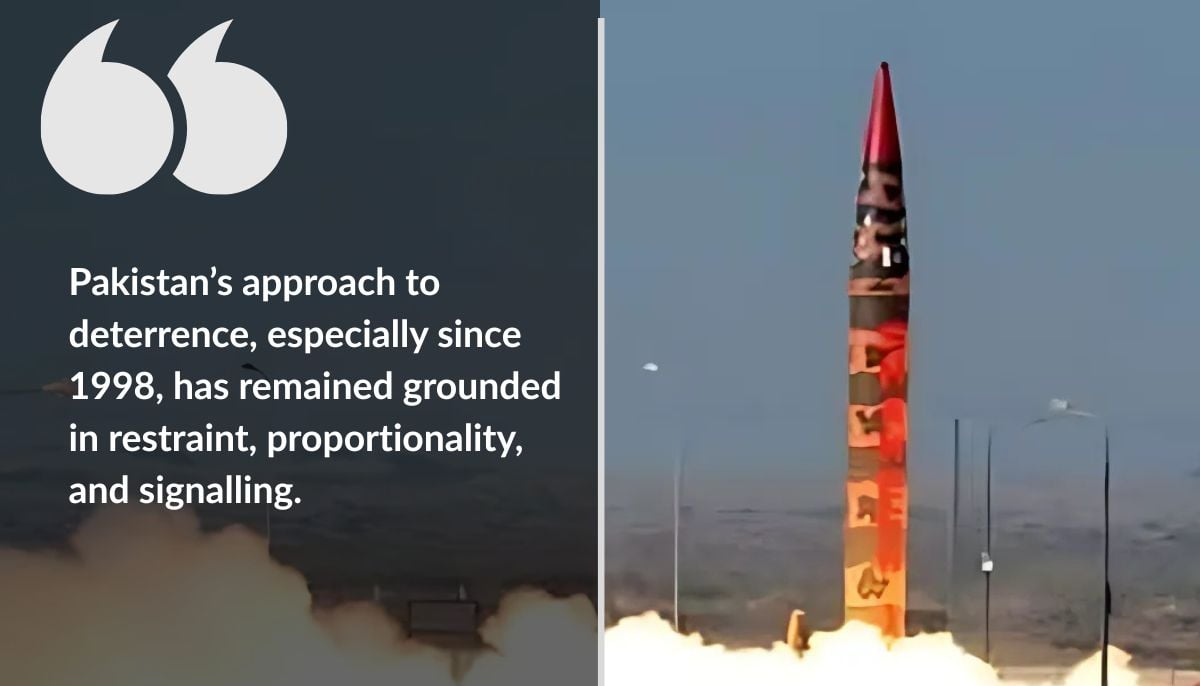
For Pakistan, however, the consequences of an ideologically driven doctrine are immediate and manifold. First, as seen in February 2019 and now in May 2025, it reduces the threshold for use of force. As seen, the Indian political leadership seeks to score domestic points through aggressive posturing. Second, it undermines institutional checks within the military and political system, eroding the space for strategic restraint, and making its shift from restraint to retaliation obvious. And third, it elevates misperception and miscalculation as structural features of crisis behaviour rather than exceptions.
In this environment, Pakistan’s deterrence doctrine must continue to evolve not through the expansion of warheads or systems alone, but through doctrinal clarity, strategic signalling, and investments in emerging technologies that ensure survivability and second-strike capability. The focus must remain on deterrence stability, not arms race instability.
Pakistan’s approach to deterrence, especially since 1998, has remained grounded in restraint, proportionality, and signalling. Even in the 2025 crisis, Pakistan chose to respond militarily without targeting civilian areas, thereby reinforcing its commitment to a responsible deterrent posture. This strategic behaviour needs to be acknowledged internationally, especially as India attempts to recast its escalatory actions as counterterrorism.
The international community must also recognise that Pakistan has borne the brunt of terrorism, with over 2,500 casualties in 2024 alone, while continuing to be accused of duplicity. This dual framing ignores the sacrifices made and efforts undertaken, including robust FATF compliance and counterterror financing reforms. These facts matter when interpreting regional intelligence assessments and strategic intentions.
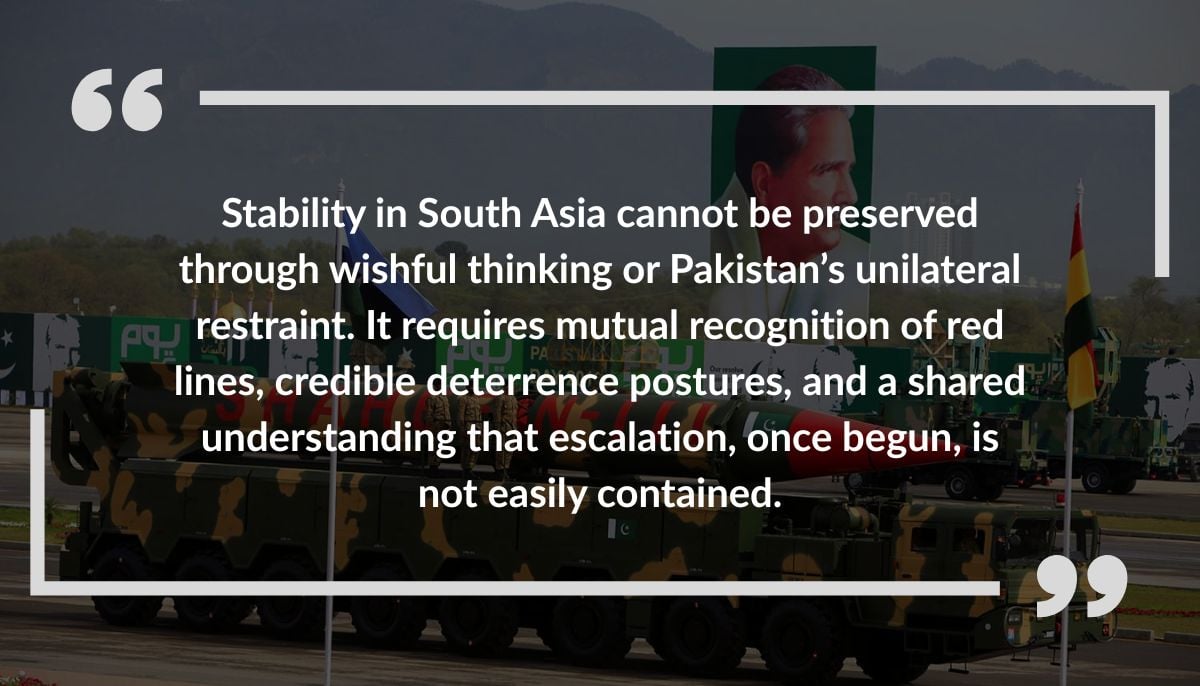
As we mark another Chagai anniversary, Pakistan’s deterrence doctrine stands at a pivotal juncture. It must adapt to not only India’s evolving capabilities but also to its changing character, one where ideology increasingly shapes doctrine. And that perhaps will be Pakistan’s most crucial challenge. Stability in South Asia cannot be preserved through wishful thinking or Pakistan’s unilateral restraint. It requires mutual recognition of red lines, credible deterrence postures, and a shared understanding that escalation, once begun, is not easily contained.
What makes the 2025 crisis especially significant is that it was the first fully realised instance of multidomain warfare between India and Pakistan. The crisis was not confined to conventional air strikes. It unfolded across multiple domains: missile exchanges, coordinated drone swarms, long-range precision fires, electromagnetic spectrum warfare, cyber intrusions, and satellite-based ISR (intelligence, surveillance, and reconnaissance) operations. For the first time, both sides deployed capabilities that blurred the lines between peacetime signalling and wartime lethality.
Another critical dimension that emerged in the May 2025 crisis was the depth of Chinese-Pakistani military integration and operational interoperability. India, in its hubris, severely underestimated the extent to which real-time coordination, shared ISR feeds, and joint planning protocols between Pakistan and China had matured since 2019. This was not ad hoc support by China for Pakistan, it was a doctrinal alignment unfolding in strategic sync over the years. From early warning systems to counter-drone operations and electromagnetic spectrum defence, China’s embedded support enhanced the Pakistan military’s ability to absorb, respond, and neutralise the crisis quickly. In future, this fusion of deterrence architectures, which is anchored in strategic trust and technological synergy will be the defining feature of Pakistan’s evolving deterrence posture, especially in the face of India’s expanding trilateral technological linkages with the US, Israel and other defence partners.
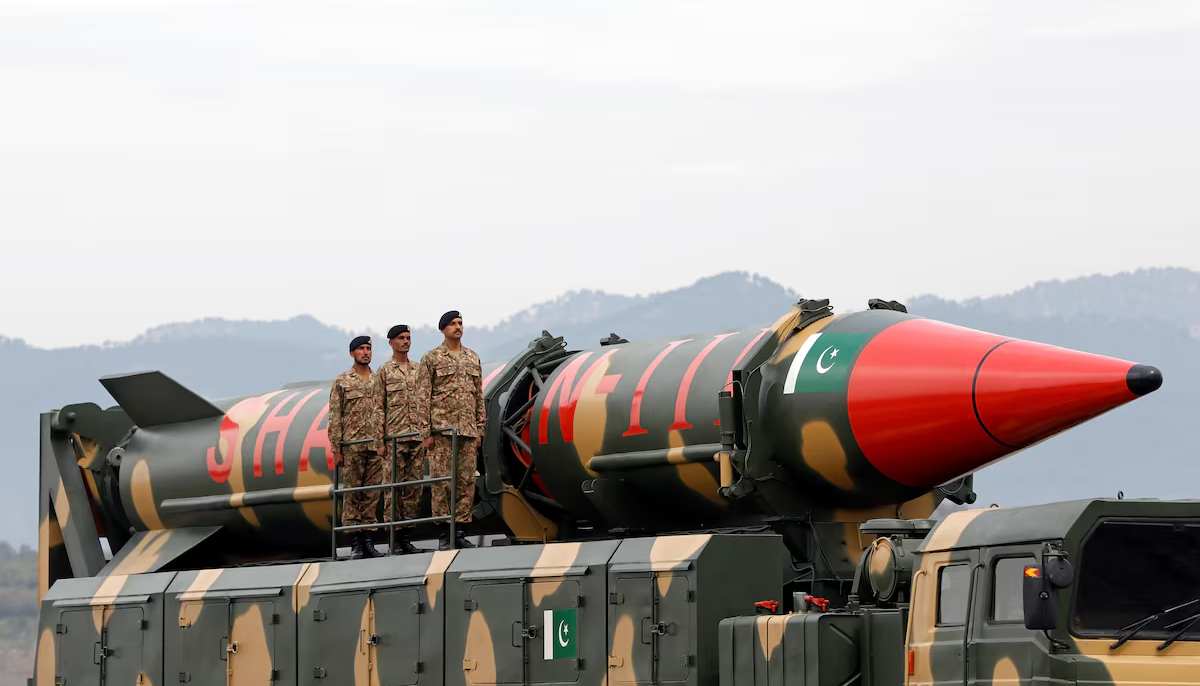
In this age of disruption, deterrence has morphed and is no longer just about missiles and warheads. It is about mastering the digital terrain, defending space assets, neutralising autonomous systems, and ensuring resilience across domains. The evolution of Pakistan’s deterrence doctrine must reflect this shift. Strategic stability now requires integration, not just of platforms and systems, but of information, perception, and posture.
Pakistan’s strategic planners understand this. They have lived it. As 2025 showed once again, deterrence in South Asia is not theoretical, it is lived, practised, and recalibrated with each crisis and the future will have a new baseline for escalation. Pakistan’s response demonstrated that it is neither reckless nor reactive, it is deliberate, doctrinal, and anchored in the belief that peace must be defended with clarity, not confusion.
The region does not need another crisis to learn this lesson again. It needs responsible statecraft that is not ideologically motivated like India, restraint backed by resolve like Pakistan exhibited in both the Pulwama-Balakot 2019 crisis and the May 2025 post-Pahalgam crisis, and an acknowledgement that the costs of miscalculation are now far greater than ever before.
Chagai was the beginning. The evolution of Pakistan’s deterrence doctrine, in the shadow of each confrontation since, proves only one thing that deterrence here is not a relic of the past. It is perhaps the only thing keeping the region from the brink.
Rabia Akhtar is Dean Social Sciences, University of Lahore, Pakistan and is currently a visiting fellow at the Project on Managing the Atom, Belfer Center, Harvard Kennedy School. She posts on X @Rabs_AA.
Header and thumbnail illustration by Geo.tv



